Gas column heat exchanger
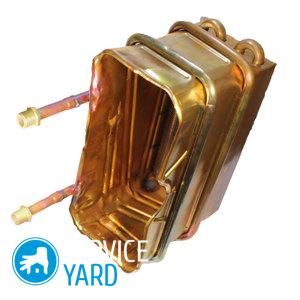
A modern house located in a remote village or in a country house cannot be imagined without a gas column, because it serves as the main heating device for water. But if you began to notice that the water does not want to be heated, it is quite possible that the heat exchanger for the gas column is clogged. Find out how to clean it and what it is all about in this article.
to contents ↑Important! I would like to warn right away that the article is about cleaning scale from instantaneous water heaters. We do not recommend interfering with the gas part of the column. The gas column must be dealt with by gas workers. Otherwise - because of even the smallest oversight, you can make very big troubles.
Geyser device
Over time, salt deposits, otherwise referred to as “scum”, accumulate on the heat exchanger for the geyser. To eliminate scale from a geyser, you must first understand the very device of the heating device.
As a rule, a geyser is a metal cabinet, to which two pipes are attached - one of them delivers cold water, and the second - gas.
Inside such a cabinet such elements are hidden:
- heat exchanger;
- main burner;
- igniter.
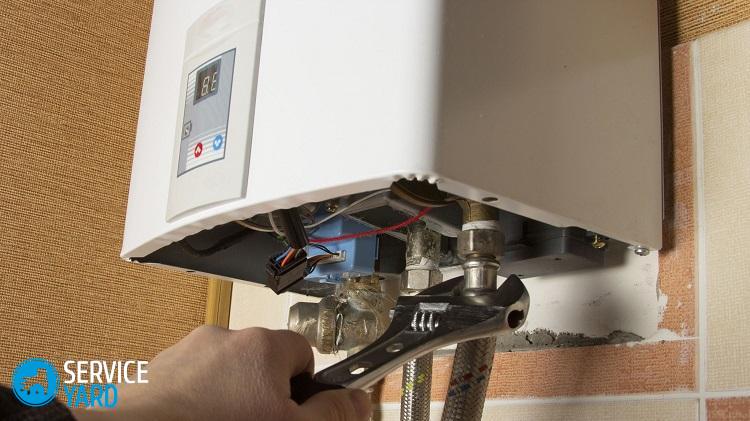
Operating principle
As soon as you open the faucet with hot water, an ignition is automatically triggered inside the column. As a result, the ignition burner lights up, but it already ignites the main burner, with the help of which the process of heating cold water inside the heat exchanger to the required temperature takes place.
By design, the heat exchanger has a spiral shape. During gas combustion, a very high temperature is created, due to which water rapidly heats up and is immediately supplied to collapsible taps. All products of natural gas combustion pass through the outlet in the chimney, and then to the street.
All modern models of geysers are made with various types of ignition - electric, manual and piezo ignition.
to contents ↑Important! The manual method, when the fire appears by bringing a lit match to the igniter itself, is currently rarely used. As a rule, people acquire models that do not require human intervention in the ignition process itself.
What causes the heat exchanger to clog?
The most common malfunction of all gas flow heaters and geysers is the clogging of the water heater with scale that has accumulated in the heat exchanger.
How to understand whether it is necessary to clean the heat exchanger in a gas column or not, and why it gets clogged. As a rule, you yourself are guilty of overgrowing the pipes of the instantaneous water heater with scum, and only hard water is sometimes to blame.
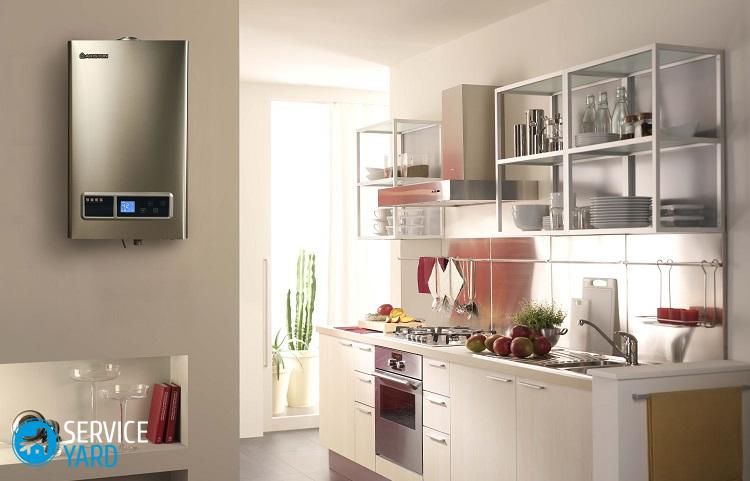
Reason 1
Why do you yourself, because all around do just that scolding the water? The thing is that the scum begins to be deposited at a water temperature above 80 degrees. Well, to be precise, at a temperature of 78 degrees, deposits have not yet formed, but at 82 intensive scale deposits begin.
Important! And why do you need such a temperature?
- in order to take a bath, you do not need a temperature above 42 degrees;
- to eliminate fats - 45 degrees is enough, means to eliminate fat fight it even in cold water;
- to wash clothes - more than 60 degrees is not necessary, but now washing machines are usually washed.
Draw your own conclusions.
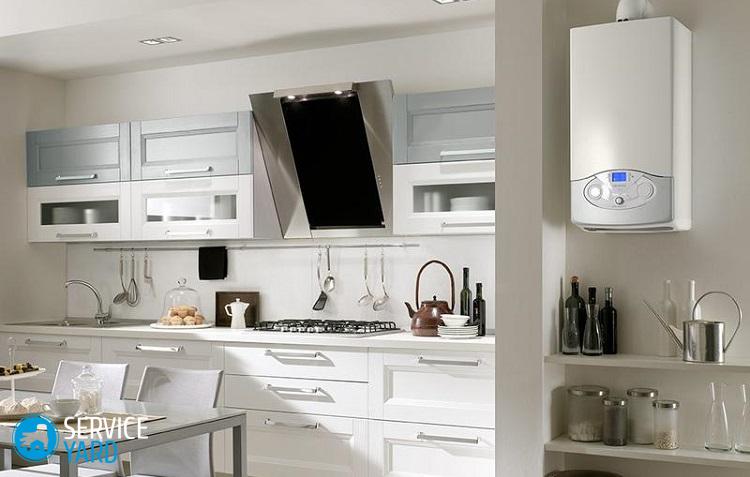
Reason 2
Almost everyone leaves the ignition column to work. Undoubtedly, this is convenient enough - there is no need to rekindle and then adjust it every time. The flame on the igniter is small enough, but if you have drilled it for reliability, it only takes an hour for the temperature in the heat exchanger to go up to 90 degrees. That’s the scum!
Reason 3
And the third mistake is the operation of the column with very low water consumption. Of course, the instantaneous water heater is unlikely to work in normal mode at low pressure.
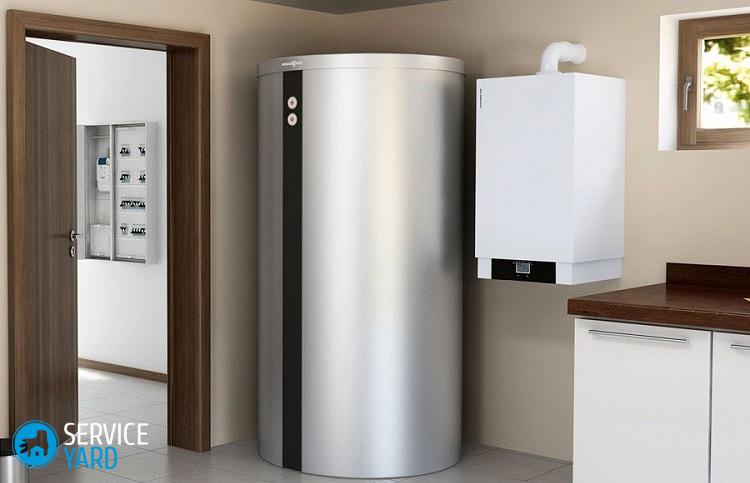
Signs of cleaning gas column heat exchanger
Well, now, in case trouble has already happened, let's get down to cleaning the heat exchanger. You can understand that your gas column heat exchanger is already clogged by the following signs:
- low pressure of hot water in the tap with good pressure with cold water;
- the column either does not turn on at all, or it turns on and then turns off immediately.
Important! Another tap at the entrance to the column itself may break, so first check it, and only then disassemble the column.
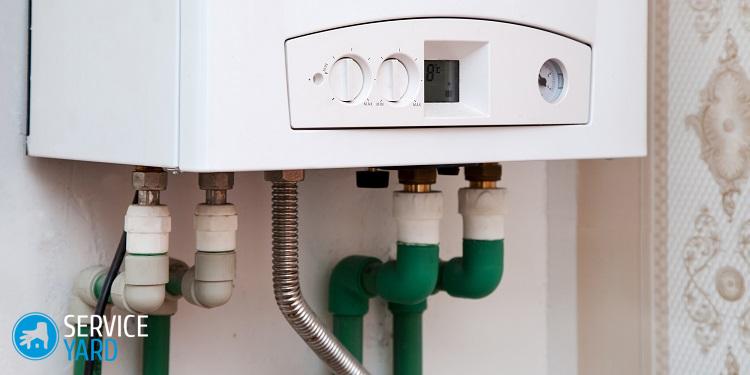
How to disassemble the column heat exchanger. What tools are needed to work?
It is not worth describing the entire disassembly process. The main thing is that you must make sure that you have the necessary tools. In a minimal set, these are:
- Bako key or pipe wrench No. 1.
- Adjustable wrench.
- Screwdrivers - flat and cross minimum No. 5.
- Set of paronite gaskets, spare.
- You will also need a 60 cm rubber hose along with a metal hose clamp.
- In advance, purchase an “Anti-scale”, which is sold in the form of dry powder, and then diluted with ordinary hot water in a household store.
Important! If you are lucky and find the “Anti-scale” in a plastic bottle in the same place, take 2 pcs better, so that it lasts 2 times.
We begin the disassembly:
- First remove all accessories from the boiler.
- Then remove the cover.
- They removed the casing, now you must decide on the water supply pipes in order not to accidentally touch the gas.
As a rule, further all recommend removing the gas column heat exchanger and flushing it outside the equipment. But we will act a little differently.
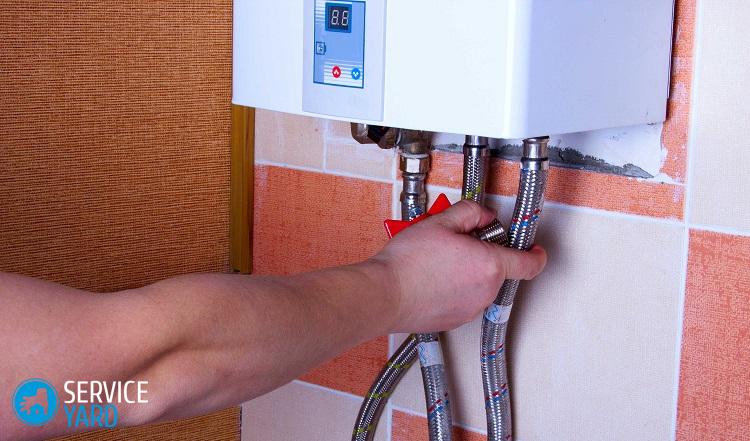
Flushing the column against unwanted scale
After you removed the casing from the column:
- Turn off the water supply at the entrance and open any of the hot water taps closer to the column.
- Then, unscrew the supply tube from the heat exchanger of the instantaneous water heater, take it a little to the side. A copper heat exchanger and tube allow you to do this without much difficulty.
- As soon as you can unscrew the nut from the heating element, water will begin to leave the gas column heat exchanger - the tap is open, drain a little water, about a liter.
Then proceed as follows:
- Put the hose on the inlet of your heat exchanger.
- Lift it above the column.
- Insert a funnel into the hose and pour the prepared solution into a thin stream.
Important! Be sure to pour slowly, otherwise, a reaction may occur, and the solution will splash back. The solution contains hydrochloric acid, which can lead to burns. Take special care of your eyes.
- The solution “Antinakipin” must remain in the heat exchanger for several hours.
- If you did not turn off the gas, you can warm the solution on an already burning igniter. The reaction will go much faster, respectively - less time will be required.
- Substitute a plastic bucket or basin under the tap, and open the water supply in the column. Just a little bit.
- Pay attention to what comes out of your hose:
- If there is a lot of dirt, and the pressure after washing is good enough, then everything went very well.
- If not, repeat the entire flushing process again, but using the “Anti-scale”, you are unlikely to have to.
Important! If you could not find the antiscale, you can use a 100 g package of citric acid, having previously dissolved it in 500 ml of water.

Security measures
Be extremely careful, because in the gas column, in addition to the heat exchanger, there are other details. The heat exchanger itself is made of copper and there will be absolutely nothing to it. But here, the so-called gearbox, as a rule, is made of aluminum, and you can ruin it. That is why if you can’t find the “Anti-scale”, do not experiment with other solutions according to our scheme - it is best to remove the heat exchangers and clean it separately.
to contents ↑Stock footage
In this article we told you about the reasons for the appearance of scale on the heat exchanger of a gas column, how to recognize the problem and proposed the easiest way to deal with such deposits on the heating element. We hope you succeeded in coping with the task, and your equipment continues to function properly, as before.
- How to choose a vacuum cleaner taking into account the characteristics of the house and coatings?
- What to look for when choosing a water delivery
- How to quickly create comfort at home - tips for housewives
- How to choose the perfect TV - useful tips
- What to look for when choosing blinds
- What should be running shoes?
- What useful things can you buy in a hardware store
- Iphone 11 pro max review
- Than iPhone is better than Android smartphones



